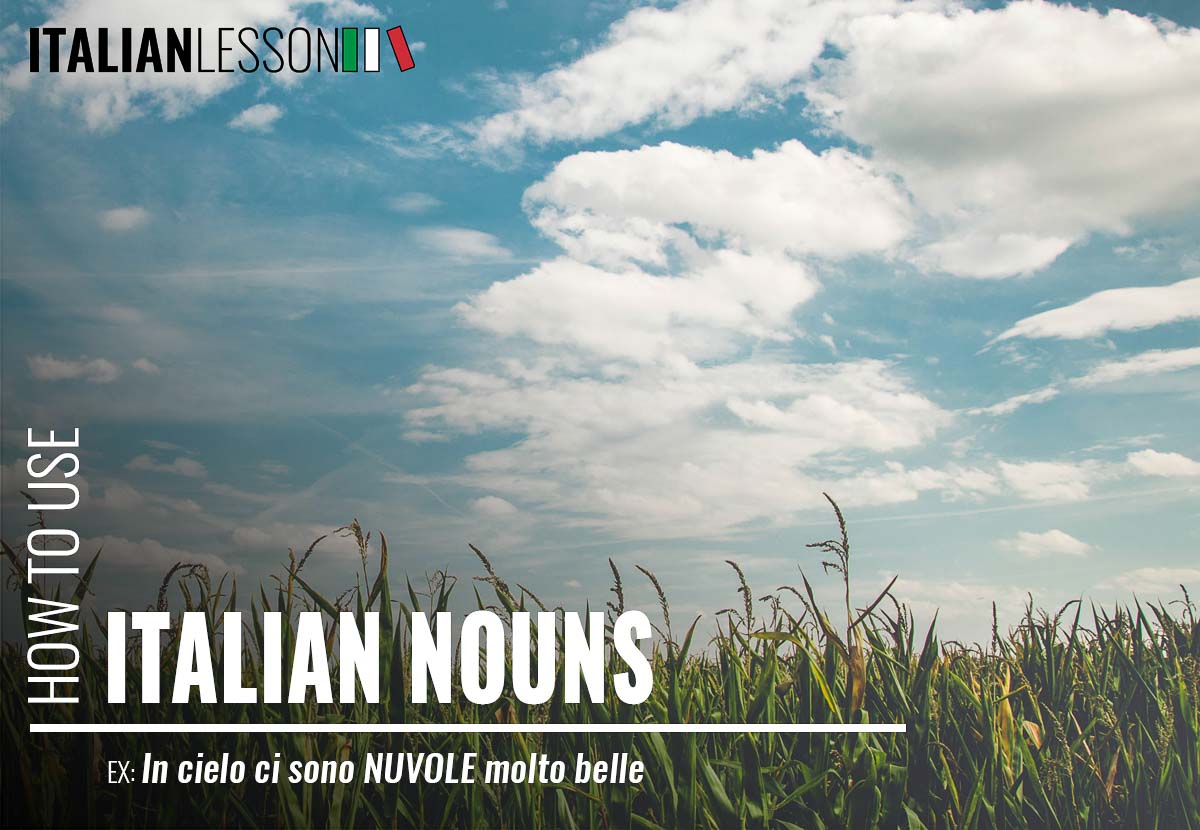
The Italian noun. Before explaining a new rule of Italian grammar, I want to give you a riddle. Ready? Riddles are also a way to broaden your Italian vocabulary and perfect your Italian pronunciation (watching, for example, videos where these riddles are performed)!
Riddle: what do you use to say meaningful things in any language?
Little hint: The voice is not one of them!
Joking aside, today I want to talk to you about a very important topic for all languages in the world, but let’s see it in detail.
The ITALIAN NOUN
First of all, the cornerstones of Italian grammar are the noun and the verb. In the sentence, the noun has the task of indicating an object or a person. To simplify the categorization of nouns, a short Italian nouns list could be drawn up.
An Italian noun can be categorized into:
| proper nouns | A name used for an individual person, place or organization, spelled with an initial capital letter in English – Adriana, Italy |
| common nouns | They denote a class of objects – Casa / Home (indicates, generally, a single element common to all housing) |
| collective nouns | They indicate a group of elements belonging to the same category – Sciame / Swarm(indicates a group of bees) |
Moreover, concrete and abstract nouns.
There also other categorizations but it’s better not to confuse you with all these new rules!
Examples of concrete and abstract nouns:
- concrete: Nuvola / Cloud
- abstract: Tristezza /Sadness
Plus, other examples of nouns can be:
- Giornalaio (from Giornale) / Newsagent (from Newspaper)
- Cosuccia / Little thing (something that has little value)
- Asciugacapelli / Hairdryer (it’s composed of the verb “asciugare” – to dry, plus the noun “capelli” hair)
An Italian noun can be, of course, feminine or masculine, singular or plural.
Example:
il vaso / i vasi (jar / jars)
la casa / le case (home / homes).
Another category of nouns can be defined as “mixed” because, although they end in E (plural in I), they can include both masculine and feminine nouns:
la cornice / le cornici (frame / frames)
il limone / i limoni (lemon / lemons)
In conclusion, there are lots of exceptions (in grammar of course) but for today I want to give you further examples of nouns, in order to improve your understanding and expand your italian vocabulary!
Here you are:
il dentista / i dentisti / le dentiste (dentist / dentists)
l’autista / gli autisti / le autiste (driver / drivers)
l’arcobaleno / gli arcobaleni (rainbow / rainbows)
la radio / le radio (radio/radios)
la città / le città (city / cities).
il dito / le dita (finger / fingers)
l’uovo / le uova (egg / eggs)
You have a lot to study but my advice is to read a lot and always consult an Italian dictionary when you have doubts about the gender, number and plural of nouns!
Here is a link explaining how you can combine several names
https://italianlesson.it/how-to/italian-prepositions-how-to-use/
Read and study many texts in Italian: watch videos, TV series, films and you will see that little by little you will begin to apply those “rules” with amazing ease!
Here is another in-depth study
https://it.wikipedia.org/wiki/Sostantivo
Here is a video for an in-depth look at names
That’s all folks!
